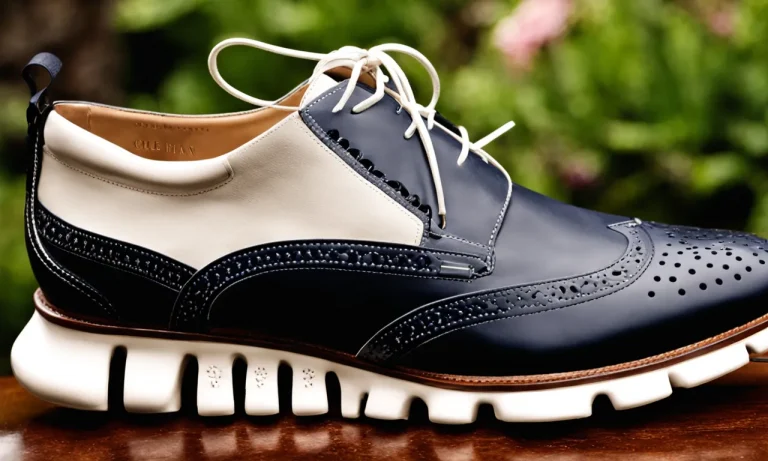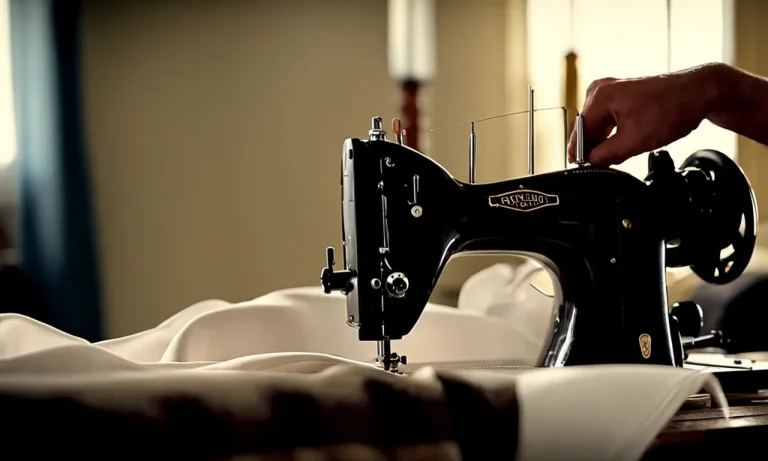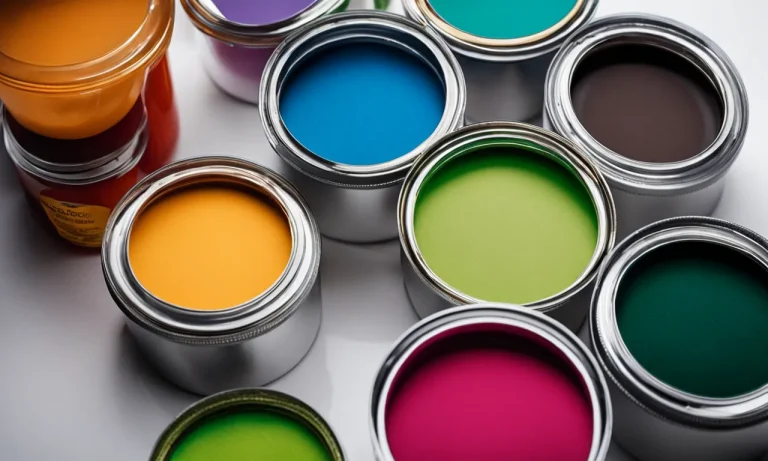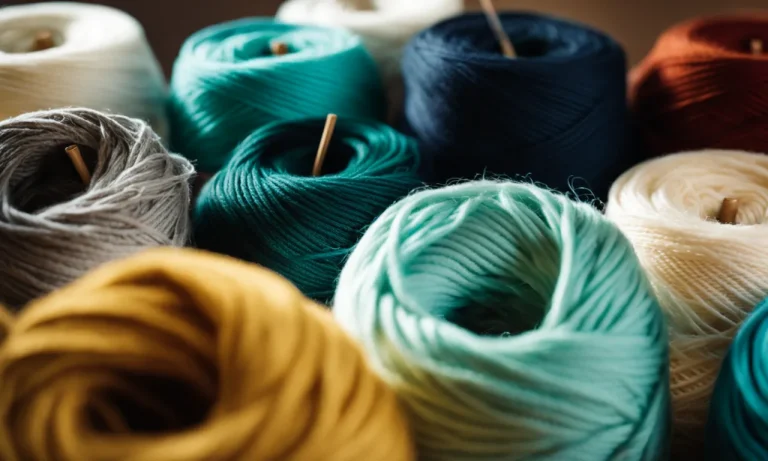Can You Use Yarn For Macrame?
Macrame is experiencing a resurgence in popularity as a fun DIY craft. Using knots and creative patterns, macrame allows you to make beautiful wall hangings, plant holders, jewelry, and more. When getting started with macrame, one of the first questions is what type of cordage to use.
Read on to learn all about using yarn for macrame projects.
What is Macrame?
Macrame is a centuries-old art form that involves creating intricate patterns and designs using knotting techniques. It originated in the 13th century and was popularized by sailors who used it to create decorative and functional items on their ships.
Today, macrame has evolved into a popular craft that allows individuals to create beautiful and unique pieces of art.
Definition and history of macrame
Macrame is the art of knotting cords together to create various patterns and designs. The word “macrame” comes from the Arabic word “migramah,” which means “fringe.” It became popular during the Victorian era as a way to create decorative fringes for clothing and home decor.
Macrame gained widespread popularity in the 1970s as a form of bohemian and hippie-inspired art. It was commonly used to create wall hangings, plant hangers, and jewelry. Today, macrame has made a comeback and is being embraced by modern artisans who are exploring new and innovative ways to incorporate it into their designs.
Basic macrame knots and techniques
There are several basic knots and techniques that are commonly used in macrame:
- Square knot: This is one of the most fundamental knots in macrame. It is created by crossing two cords over each other and then bringing the ends through the loop created.
- Half square knot: Similar to the square knot, the half square knot is created by only tying one half of the square knot. This creates a spiral effect when repeated.
- Lark’s head knot: This knot is used to attach cords to a rod or ring. It is created by folding a cord in half and placing the folded end under the rod or ring, then pulling the loose ends through the fold.
- Double half hitch knot: This knot is used to create a diagonal or chevron pattern. It is created by tying two half hitch knots in a row.
These are just a few examples of the many knots and techniques that can be used in macrame. With practice and experimentation, you can create intricate and unique designs that showcase your creativity.
If you would like to learn more about macrame and explore different knotting techniques, Macrame Lovers is a great resource to get you started. They offer tutorials, patterns, and inspiration for macrame enthusiasts of all levels.
What Type of Yarn Works Best for Macrame?
When it comes to macrame, choosing the right yarn is essential for achieving the desired results. Not all yarns are suitable for macrame, as some may lack the strength and durability needed for intricate knotting and hanging.
Here are a few factors to consider when selecting yarn for your macrame projects.
Look for a strong, waxed yarn
One of the key characteristics to look for in macrame yarn is strength. Macrame involves creating tight knots and intricate patterns, so you’ll want a yarn that can withstand the tension. Opt for a strong yarn that won’t easily break or fray during the macrame process.
Waxed yarn is also recommended as it provides added durability and ease of knotting.
Recommended weights and materials
When it comes to weights, medium-weight yarns such as worsted or DK weight are commonly used in macrame. These yarns strike a balance between being sturdy enough to hold the knots in place and still easy to work with.
Cotton yarn is a popular choice for macrame due to its strength, softness, and availability in a wide range of colors. Other materials like jute, hemp, or nylon can also be used for a more textured and rustic look.
Variegated vs solid color yarn
Choosing between variegated and solid color yarn is largely a matter of personal preference and the specific design you have in mind. Variegated yarns can add visual interest and create unique patterns in your macrame projects.
On the other hand, solid color yarns can provide a more cohesive and minimalist look. Consider the overall aesthetic you want to achieve and experiment with different yarn options to find what works best for your macrame creations.
For more information on macrame yarns and techniques, you can visit websites like The Spruce Crafts or Macrame for Beginners.
Pros and Cons of Using Yarn for Macrame
Pros: Wide variety, inexpensive, easy to work with
Using yarn for macrame projects offers several advantages. One of the main benefits is the wide variety of colors and textures available. Yarn comes in a plethora of options, allowing you to create vibrant and unique macrame pieces that suit your personal style.
Whether you prefer a soft and cozy look or a bold and vibrant one, there is a yarn out there that will meet your needs.
Another advantage of using yarn is its affordability. Compared to other macrame cords, yarn is generally more budget-friendly. This makes it a great option for beginners or those who want to experiment with different designs without breaking the bank.
You can find yarn at local craft stores or online at affordable prices, making it accessible to everyone.
Furthermore, yarn is easy to work with, especially for beginners. Its softness and pliability make it easy to manipulate and create intricate knots and patterns. Whether you are just starting out or have been practicing macrame for a while, yarn provides a forgiving and user-friendly material for your projects.
Cons: Can be prone to fraying, not as durable as other cords
While yarn has its advantages, it is important to consider some potential drawbacks as well. One issue with using yarn for macrame is that it can be prone to fraying. Yarn fibers may loosen or unravel over time, especially if the finished piece is exposed to frequent use or handling.
To mitigate this, it is recommended to use a yarn with a tight twist or consider treating the ends to prevent fraying.
Another aspect to consider is that yarn may not be as durable as other cords commonly used in macrame, such as cotton or nylon. If you are creating macrame projects that require a higher level of strength and durability, like plant hangers or wall hangings that hold heavier objects, you may want to opt for a more robust cord.
However, for decorative and lightweight macrame pieces, yarn can still be a viable option.
Tips for Successful Macrame with Yarn
Take time to prep and wax the yarn
When using yarn for macrame, it’s important to take some time to prep and wax the yarn before getting started. This will help make the yarn more durable and resistant to fraying. To prep the yarn, you can simply unwind and straighten it, removing any tangles or knots.
Then, you can apply a small amount of beeswax or candle wax to the yarn by rubbing it between your fingers. This will help to smooth out the fibers and make them easier to work with. Once the yarn is prepped and waxed, you’ll be ready to start your macrame project with confidence!
Use tighter knots
When working with yarn for macrame, it’s important to use tighter knots to ensure that your project stays secure and doesn’t unravel over time. Yarn can be more prone to slipping and coming undone compared to thicker, sturdier materials like rope or cord.
Therefore, it’s a good idea to tighten your knots as you go, making sure they are snug and secure. This will help to create a finished macrame piece that is not only visually appealing but also durable.
Consider reinforcing with glue
If you want to give your macrame project with yarn some extra strength and stability, you might consider reinforcing it with glue. This can be especially useful if you’re planning to use the finished piece for functional purposes, such as a plant hanger or wall hanging.
To reinforce your macrame knots, you can apply a small amount of fabric glue or all-purpose adhesive to the base of each knot. This will help to hold the fibers together and prevent them from loosening or coming undone.
Just be sure to let the glue dry completely before hanging or using your macrame creation.
For more tips and inspiration on macrame with yarn, you can visit macramelovers.com, a website dedicated to all things macrame. They offer tutorials, patterns, and a wealth of information to help you create beautiful macrame projects using yarn and other materials.
Best Macrame Projects to Make with Yarn
If you’re wondering whether you can use yarn for macrame, the answer is a resounding yes! While macrame traditionally uses thicker cords, yarn can be a fantastic alternative that adds a unique texture and softness to your creations.
It’s also more readily available and comes in a wide variety of colors and textures, allowing you to unleash your creativity. Whether you’re a beginner or an experienced macrame artist, there are plenty of exciting projects you can make with yarn.
Beginner: Simple wall hangings and plant hangers
If you’re new to macrame, starting with simple wall hangings and plant hangers is a great way to dip your toes into this craft. Yarn provides a lightweight and easy-to-handle material for these projects.
You can create beautiful wall hangings with intricate knot patterns or opt for minimalist designs that showcase the beauty of the yarn itself. Plant hangers made with yarn add a cozy touch to your indoor or outdoor space, allowing you to display your favorite greenery in style.
Intermediate: Baskets and jewelry
Once you’ve mastered the basics of macrame, you can move on to more intermediate projects like baskets and jewelry. Yarn is perfect for creating intricate patterns and designs that make your creations truly stand out.
You can make stylish baskets for storing small items, such as keys or jewelry, or even larger ones for holding fruits or decorative items. Yarn can also be used to make unique and eye-catching macrame jewelry pieces like bracelets, necklaces, and earrings.
Advanced: Intricate wall tapestries
For those with more advanced macrame skills, creating intricate wall tapestries with yarn can be a rewarding challenge. Yarn allows for more intricate detailing and weaving, giving your tapestries a stunning visual impact.
You can experiment with different yarn colors and textures to create beautiful patterns, shapes, and textures in your tapestry. These intricate wall tapestries can become the centerpiece of any room, adding a touch of elegance and creativity to your space.
So, don’t hesitate to grab your favorite yarn and get creative with macrame! The possibilities are endless, and you’ll be amazed at the beautiful projects you can create with this versatile material.
Conclusion
While you can run into some challenges using yarn for macrame, taking time to select the right yarn and utilizing some best practices will allow you to make beautiful macrame projects with this inexpensive and readily-available material.
From small starter projects like plant hangers to intricate wall hangings, yarn opens up a wide world of possibilities for unique handmade macrame creations.







